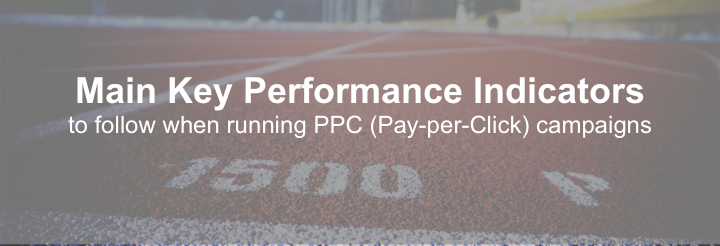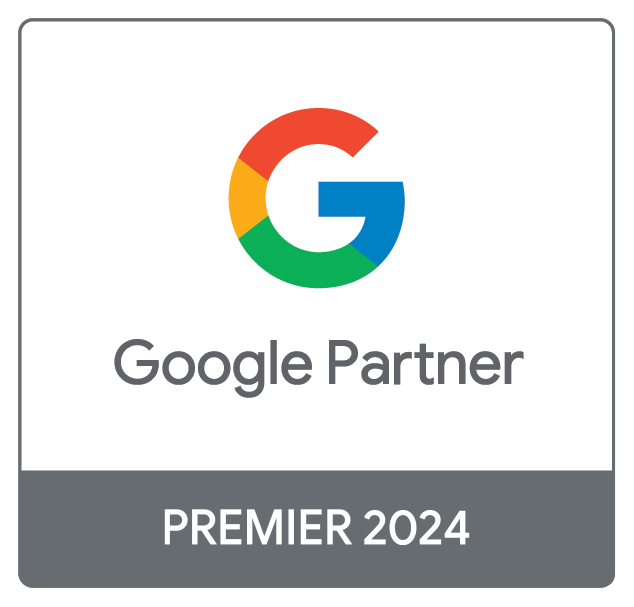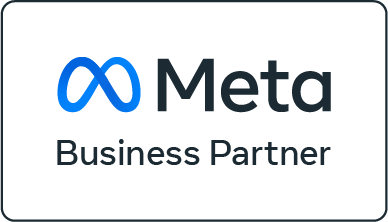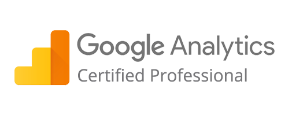
What are the main KPIs to follow when running PPC campaigns in order to make sure that your are getting the most out of your budget? If you are asking yourself this question, please read on.
KPIs can give you an idea of what is going well in your paid campaigns and also about what needs to improve. Below each KPI you can also find a few examples with top level recommendations of what you need to do in order to improve your current performance.
From the beginning you should know that the metrics are intertwined and you should keep an eye on all of them. We know that one of them might be preferred or the main one.
Cost per Click (CPC)
What it is: The Cost per Click is an indicator of how much you are paying on average for a click, so, it’s not how much you want or are willing to pay.
Why it’s important: This KPI is important as it directly influences your overall costs, it is the main way you pay for your advertising and last but not least, it’s an indicator of how competitive your market is.
How it’s measured: It is measured automatically in your PPC account at keyword, placement, adgroups, device, campaign level etc. It is obtained by dividing the total spent to the total number of clicks.
What you should do: It is important as a marketer to have a maximum you are willing to pay because CPC is directly influencing the CPA. In case you don’t have one you can start thinking of setting one. You can set an overall CPC, for each product/service category etc.
You can set it based on your current results by using ROI and conversion rate or if you are just starting the PPC you can make an estimate based on desired volume of conversions, an average 1% conversion rate and the desired ROI level. If you need help in setting it you can contact one of our consultants.
Hypothetical example: Let’s imagine you have seen an increase in your CPA and a decrease in ROI. The first thing that you should do is a quick analysis of the CPC (overall, adgroup level, campaign level etc.). Most likely you will discover an ascending trend of your CPC and you got to this point by trying to keep in line with the competition. You could be tempted to decrease the CPC bid but have in mind that this will directly influence your Quality Score, Average Position, Conversion Rate and most importantly the volume of conversions.
What you can do is:
1. Check search terms and add negatives for irrelevant searches.
2. Try expanding the campaign with new keywords which have lower competition and higher purchase intention.
Click-Through-Rate (CTR)
What it is: Click-Through-Rate is the indicator of how many clicks your ads received out of the total of times your ads were shown. Is the best way of measuring the effectiveness of your ads.
Why it’s important: It is crucial to measure and track your CTR as this way you know what the key messages that your audience reacts to are. Furthermore, CTR is part of the Quality Score and it’s a major influencer for the CPC, overall costs and Cost per Acquisition.
How it’s measured: It is measured automatically in your PPC account at keyword, placement, adgroups, device, campaign level etc. It is obtained by dividing the total number of clicks to the total number of ad impressions.
What you should do: It is important to track and work to improve the CTR as you will have a higher Quality Score and lower costs. moreover, you should check your industry average when it comes to CTR and try to exceed it. This way you can make sure that you will pay less than your competition. If you need help with obtaining your industry benchmark when it comes to CTR, do not hesitate to contact us.
Hypothetical example: You run a diagnosis for your ads and keywords and discover that Quality score is pretty constant but under the desired level and most of the keywords are Average or Below average when it comes to expected Click-Through-Rate. In this moment you can be sure that you are paying more than you could by implementing a few regular and one-off optimisations.
What you can do is:
1. Check your industry average and see if you are under or above it.
2. A/B test your ads and create new ones based on the top performers.
3. Add negative keywords at adgroup, campaign and account level.
4. Improve the text of your ads by segmenting the adgroups and adding the keywords in the body of the ad.
Cost per Conversion or Cost per Acquisition (CPA)
What it is: Cost per Conversion or Cost per Acquisition is the metric that tells you how much you are paying for each customer coming from the paid campaigns.
Why it’s important: The main reason the CPA is a critical metric comes down to making sure that you are efficiently spending the money to bring a customer (you are not spending more than you can afford in order to bring a client with PPC campaigns).
How it’s measured: It is measured only if you set it up. There are several ways to set it up (directly measure in AdWords, import Goals from Analytics etc.). Every time a user completes an important action on your website (buys something, asks for a quote, downloads a pdf etc.) the system will “see” it based on a script installed on your website.
What you should do: It is absolutely vital to track the conversions coming from your paid campaigns as it is an efficient way to optimise the campaigns. You can see the conversions at: keyword, adgroup, campaign, device level etc. Make sure you discuss with your development and marketing team to set it up in case you are not tracking it.
Hypothetical example: You are measuring the calls coming from ads and also the conversion coming from website form completion but most of your requests are coming via phone calls coming from the website. As a result, your CPA is really high and you do not know which are the components bringing the phone calls and how to optimise them. Moreover, you do not have an exact number of phone calls coming from the website.
What you can do is:
1. Install call tracking on your website for Google AdWords using Google Tag Manager by following this steps.
2. Test the new tracking you have set in place.
3. Give it a few days or weeks, depending on the number of conversions you get on average and draw some conclusions for your optimisation efforts.
4. Track repeat business and maybe you will see that you can have a higher CPA than the CPA that you would be able to pay for the first buy only.
Return on Investment (ROI)
What it is: Return on Investment, ROI for short, is the KPI that shows how much revenue you have made after all expenses. You can express it in percentage or in absolute number.
Why it’s important: Because this metric shows you the performance of your campaigns. Basically, this is how you know if the campaigns are profitable or not. Just like CPA, have in mind to check repeat orders.
How it’s measured: It is measured by calculating this formula:
ROI= (Revenue-Cost of Goods Sold)/Cost of Goods Sold
It is not an automated formula in the account unless you assign a value for your conversions.
What you should do: It is absolutely vital to track the profit you are making from the AdWords campaigns and repeat buys coming from PPC campaigns and customers. This way you will know if the effort is worth your while or you are paying a lot more than you are gaining. Tracking this metric into more detail gives you a better idea of what activities need optimisation.
P.S.: You would be surprised how many medium businesses are not tracking this metric into more detail.
Average Order Value (AOV)
What it is: If you have calculated the ROI then it will be easy to calculate this indicator. If not, then it will be a lot easier to calculate an average ROI once you have this indicator. The name is fairly suggestive but to keep things short(er) this KPI tells us how much the customers are spending on average when they buy from us.
Why it’s important: AOV is mainly used in ecommerce but it could also be used in B2B as it is the average amount of money that a client is paying for your goods or services. It is an important KPI as it helps you understand on average how much you can pay for a client and if the campaigns are efficient.
How it’s measured: Simply divide the total revenue by the total number of orders. You can measure it manually or automatically. We can help you figure out this metric for all your channels so feel free to talk to one of our consultants.
What you should do: You should have in mind that AOV is directly influenced by the price of the product, seasonality and any type of promotion or loyalty program that you have in place.
Test a lot of variation of these and also do not forget to look at historical data and compare. This way you can find ways to incentivise your audience to have a higher AOV with minimum effort.
To sum things up…
…we could also talk, in some cases, about Impressions, Quality Score and Total Spend but we decided to present only the metrics above as these three metrics are strongly connected to all of the KPIs presented.
By running campaigns without looking at any KPIs or looking only at a limited type or number of KPIs, you might end up with high costs and lose business.
For further details and for help to optimise or discover your main KPIs, contact us and let’s start a conversation.








